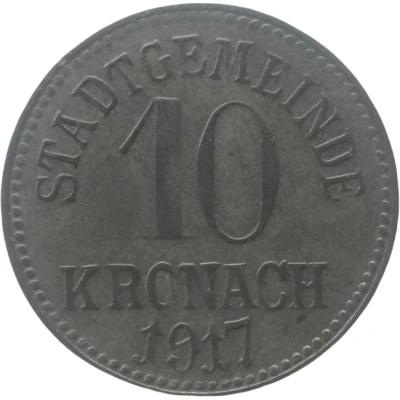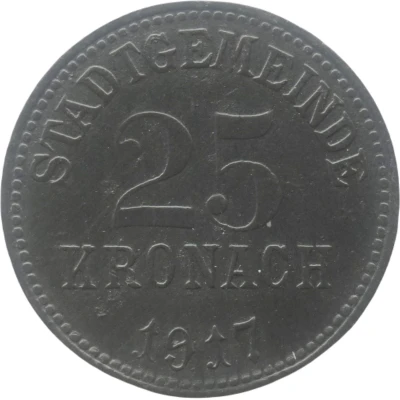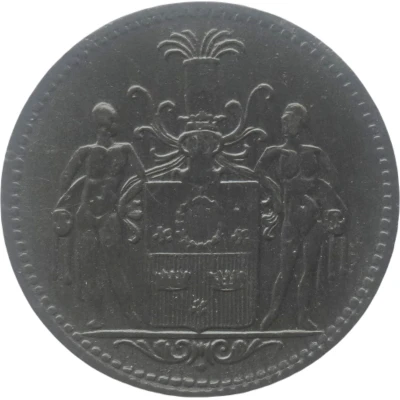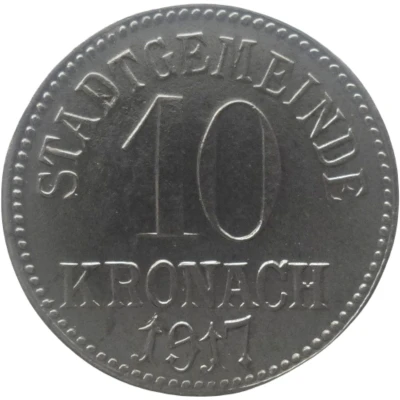
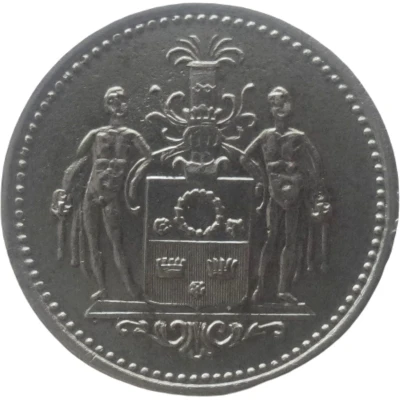

© Willem63 (CC BY-NC-SA)
10 Pfennigs - Kronach
1917 year| Iron | 2.4 g | 20 mm |
| Issuer | City of Kronach (Federal state of Bavaria) |
|---|---|
| Emperor | William II (Wilhelm II) (1888-1918) |
| Type | Standard circulation coin |
| Year | 1917 |
| Value | 10 Pfennigs (10 Pfennige) (0.10) |
| Currency | Mark (1914-1924) |
| Composition | Iron |
| Weight | 2.4 g |
| Diameter | 20 mm |
| Thickness | 1.1 mm |
| Shape | Round |
| Technique | Milled |
| Orientation | Medal alignment ↑↑ |
| Demonetized | Yes |
| Updated | 2024-10-04 |
| Numista | N#85544 |
|---|---|
| Rarity index | 79% |
Reverse
Coat of arms
Edge
Plain
Comment
Issuing body: [Stadt, Bayern].Interesting fact
The 10 Pfennigs - Kronach 1917 coin from the City of Kronach in Bavaria, made of iron and weighing 2.4g, is interesting because it was produced during a time of economic and political turmoil in Germany. The coin was minted in 1917, during World War I, when the country was facing severe economic challenges, including inflation and a shortage of valuable metals like gold and silver. As a result, the German government was forced to use alternative metals like iron to produce coins, which were previously made of more valuable materials. This coin is a unique example of how a country's currency can be impacted by historical events, and it serves as a reminder of the economic and political challenges faced by Germany during World War I.
